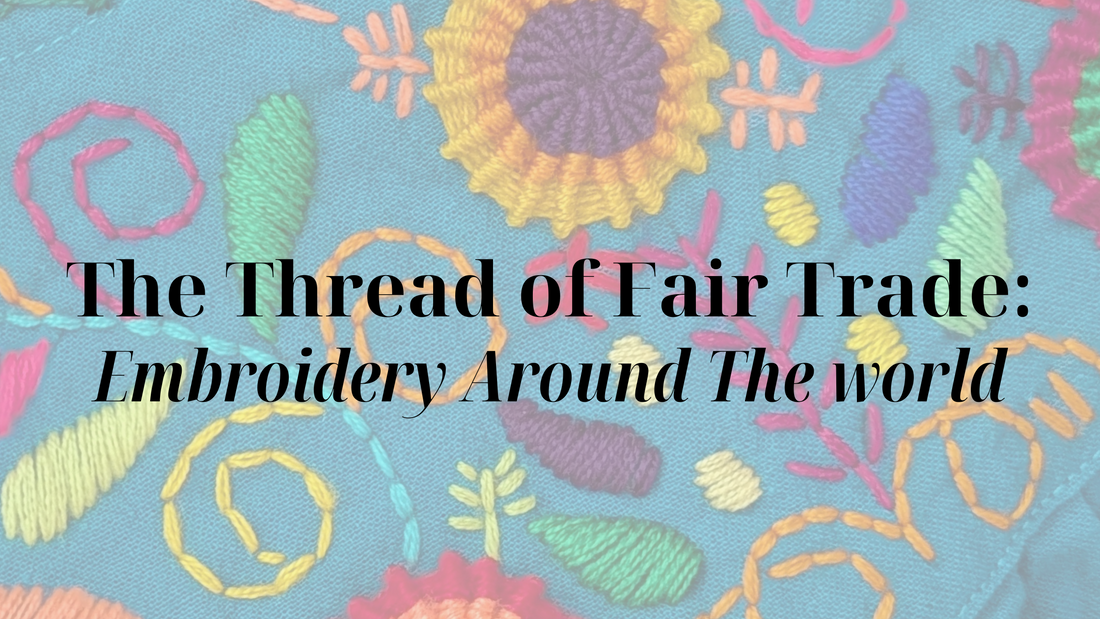
The Thread of Fair Trade: Embroidery Around The World
Embroidery is nothing new. The art of dancing a needle through fabric and carrying thread or yarn along with it is thought to have existed for over 30,000 years. Over time, simple stitching evolved into embroidery as we know it today. What’s incredible is that people all over the world manage to bring new life to this ancient art form every day.
Throughout history, the embroidery of different regions and cultures has helped us better understand life at that time and place. The varieties of fabrics used, colors of the materials, types of stitches, and repeated motifs are just a few aspects of embroidery that offer us insights into history and tradition.

Fair trade stores, like Latitudes, are a great place to explore embroidery traditions from around the world. In one place, we can walk around and view embroidery from different regions of many countries. We can see what traditions have stood the test of time and how modern imagery and stitches are being used today.
The following are examples of embroidery you can find at Latitudes, where they come from, and how they continue to be an indicator of life in the regions from which they come.
Peruvian Tradition
Embroidery in Peru began with indigenous communities. Peruvian embroidery is known for using natural fibers such as alpaca fur and cotton.
Embroidery was used to create textiles for religious rituals, various ceremonies, and everyday uses such as clothing and tapestries. Much of Peruvian embroidery is recognized for bright colorways and having thicker, durable stitches that reflect the region's flora and fauna.

Embroidery in Haiti
Embroidery shows up in many forms throughout Haitian history, but one of the best known is the Drapo Vodou or ritual flags. These flags are hand-embroidered using sequins, beads, and many other items to create incredible depictions of Vodou gods.
While not as intricate as sequined flags, embroidered greeting cards from Rosie’s Boutique Haiti show one of the many ways embroidery can go beyond textiles. Each Rosie’s card supports the Mission of Hope non-profit dedicated to employing Haitian mothers in hopes of lowering the high number of approximately 80% of children in Haitian orphanages who have living family.

Guatemalan Embroidery
The textiles of Guatemala are a testament to the long history and culture behind embroidery. Traditional wear is still popular in many areas of Guatemala. While clothing has moved towards being an expression of fashion, much of the clothing still portrays the original motifs and patterns of regional tradition.
Embroidered dresses and hats at Latitudes show some more modern elements, while many items made using recycled traditional garments, like bags made from Huiples, show the colors and patterns of old.

Take a walk through the world's textile traditions when you shop fair trade. To support the continuation of traditional techniques and the livelihood of global artisans, shop at Latitudes Fair Trade Store.
